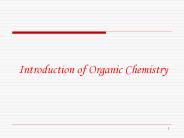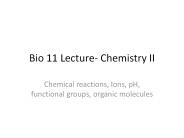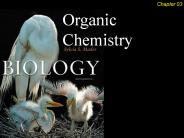Sulfhydryl PowerPoint PPT Presentations
All Time
Recommended
affects enzyme systems in microsomes and mitochondria ... Sulfhydryl-containing proteins and enzymes systems are altered by exposure to As ...
| PowerPoint PPT presentation | free to view
Molecular and Cellular Responses to Oxidative Stress and Changes in ... Thiol redox: GSH, GSSG, protein sulfhydryls. Pyridine nucleotide redox: NADPH/NADP ...
| PowerPoint PPT presentation | free to view
Gluten Structure. Sulfhydryl groups - SH. Disulfide bonds -S-S- Hydrogen bonds -H. Dr. Jean Weese ... Gluten Proteins O. Glutenin - glutamine C-NH2. proline ...
| PowerPoint PPT presentation | free to view
Carbonyl C=O. aldehyde: at end of carbon chain. ketone: nested ... Usually very reactive. ATP. Sulfhydryl -SH. Important for protein stabilization. Thiols ...
| PowerPoint PPT presentation | free to view
Antibodies and small molecules in ADCs are covalently linked through a linker that allows small molecule drugs to bind to the lysine side chain amino groups in the antibody, such as T-DM1, or to sulfhydryl groups obtained by reduction of disulfide bonds between antibody chains, such as an anti-CD30 IgGl monoclonal antibody cAClO-MMAE conjugate or to an engineered cysteine residue introduced at a particular site on the antibody, such as a THIOMAB-drug conjugate. The number of small molecules in the ADC and the location of the connections can be inconsistent through the first two forms, and the ADC is actually a mixture.
| PowerPoint PPT presentation | free to download
(aldehyde) (ketone) Carboxyl. Methyl. Ethyl. Phenyl. Amino. Amido. Guanidino. Imidazole. Sulfhydryl ... Know the names and the structures, including electron ...
| PowerPoint PPT presentation | free to view
Elemental Sulfur Market size is anticipated to attain significant growth in the upcoming years as a result of growing product demand from agrochemical industry. Sulfur is a natural occurring non-metallic, multivalent and a tasteless element. The product is generally recognized by its yellowish color and is found in mineral springs, water, Epsom salts, gypsum, barite, zinc blende, iron pyrites and in many minerals as well as ores. Elemental sulfur is mostly used in manufacturing of sulfhydryl, carbon sulfides, sulfuric acids, sulfites and sulfurous gas. Furthermore, sulfur has also been utilized in producing fertilizers, insecticides, detergents, black gunpowder, disinfectants, dyestuffs, pharmaceutical etc. Variety of sulfur products are utilized as additives in various scentless gases in order to recognize leakage with sulfur’s aroma.
| PowerPoint PPT presentation | free to download
1. State the empirical formula for a carbohydrate. Explain what ... c. 2 sulfhydryl groups can form a disulfide bridge. d. charged R groups can attract or repel ...
| PowerPoint PPT presentation | free to view
Polar and Non Polar and Non Polar. Fatty acids non polar and hydrophobic. Amino acid polar - serine. Amino acid( Alanine) non polar. Molecules. Glucose. Fructose ...
| PowerPoint PPT presentation | free to download
A biomolecule is a chemical compound that naturally occurs in living organisms. ... is asymmetric, or polar, and the oxygen atom is said to be electronegative. ...
| PowerPoint PPT presentation | free to view
TCA Cycle = Citric Acid Cycle = Krebs Cycle. TCA (TriCarboxylic Acid) produces citrate (aka citric acid) as an intermediate in the cycle; ...
| PowerPoint PPT presentation | free to view
Carbon and Molecular Diversity Based on Chapter 4 Major Elements of life Compounds and Molecules Structure and Function Carbon molecule and ring structure ...
| PowerPoint PPT presentation | free to download
Chapter 4 Notes Carbon and the Molecular Diversity of Life ... - long chains form carbon skeletons - often bonded to several hydrogen atoms forming a hydrocarbon.
| PowerPoint PPT presentation | free to view
Reduces number of fat stored in the body. Produced in the pancreas, then released to the small intestines. ... 'Bacillus subtilis lipase A.' RSCB Protein Data Bank. ...
| PowerPoint PPT presentation | free to view
Enzyme inactivation enters cell and interacts with cytoplasmic enzymes ... Benzalkonium chloride was the earliest 'Quat' also known as BAC. Quenching ...
| PowerPoint PPT presentation | free to view
Chemistry of Life Organic chemistry is the study of carbon compounds C atoms are versatile building blocks bonding properties 4 ... attachment of different ...
| PowerPoint PPT presentation | free to download
Carbon And The Molecular Diversity Of Life. Chapter 4. Vitalism vs. Mechanism. Vitalism is the belief that a life force exists outside of the jurisdiction of ...
| PowerPoint PPT presentation | free to view
Heavy Metal Toxicity METALS AND DRUGS (CHELATORS) TO CONSIDER ... children 40% Distribution: Initially carried in RBC and distributed to soft tissues ...
| PowerPoint PPT presentation | free to view
Fig. 4-3 Molecular Formula Structural Formula Ball-and-Stick Model Space-Filling Model Name (a) Methane (b) Ethane (c) Ethene (ethylene) Fig. 4-5 Ethane Propane 1 ...
| PowerPoint PPT presentation | free to download
Sulfur also intimately involved in biological processes ... Sulfoxides and Sulfones CH3S(O)CH2CH3 methyl ethyl sulfoxide. CH3S(O2)CH2CH3 methyl ethyl sulfone ...
| PowerPoint PPT presentation | free to download
Fly Swatter Game Review for Final Question 1 Besides a sugar and phosphate group, what other molecule may make up a DNA nucleotide? Answer Choices Deoxyribose Purine ...
| PowerPoint PPT presentation | free to view
Acetaminophen N-acetyl-P-aminophenol (APAP) Paracetamol Overdose -Most common drug taken in overdose -As little as 12g can be fatal (therapeutic dose = 2.6 gm/24 hour ...
| PowerPoint PPT presentation | free to download
Sterilization (or sterilisation) refers to any process that eliminates, removes, kills, or deactivates all forms of life and other biological agents (such as fungi, bacteria, viruses, spore forms, prions, unicellular eukaryotic organisms such as Plasmodium, etc.) present in a specified region, such as a surface, a volume of fluid, medication, or in a compound such as biological culture media. Sterilization can be achieved through various means, including: heat, chemicals, irradiation, high pressure, and filtration. Sterilization is distinct from disinfection, sanitization, and pasteurization, in that sterilization kills, deactivates, or eliminates all forms of life and other biological agents which are present.
| PowerPoint PPT presentation | free to download
Organic molecules
| PowerPoint PPT presentation | free to view
Introduction of Organic Chemistry * * * * * * * * * * * * * * * * * * * * * * * * * * * * * * * * * * * * * * * * * * * * Organic molecules can be divided into four ...
| PowerPoint PPT presentation | free to download
afferent arteriolar blood flow. surface area for filtration. Kidney Physiology. Proximal tubule ... Compensatory increases in single nephron GFR ...
| PowerPoint PPT presentation | free to view
Carbon is tetravalent- can make up to 4 covalent bonds- therefore ... dextral vs. sinistral -mirror images -asymmetric carbon. C. H. C. O-H. Functional groups ...
| PowerPoint PPT presentation | free to view
Carbon Chemistry Carbon is the Backbone of Biological Molecules (macromolecules) All living organisms Are made up of chemicals based mostly on the element carbon
| PowerPoint PPT presentation | free to view
... IUPAC Way Example: ... defense spray of North American striped skunk Trans-2-butene-1-thiol Naming Thiols Use the same rules as for ... Examples Alcohols -OH ...
| PowerPoint PPT presentation | free to view
So why do Acids taste sour? Your tongue has proton receptors ... Phosphodiester bonds important for energy storage and DNA properties. ATP. Thank you for coming! ...
| PowerPoint PPT presentation | free to view
The active site contains a Thr-Tyr dyad and a Thr-Lys-Asp triad. ... The dyad Thr catalyzes the acylation and forms a covalent intermediate, ...
| PowerPoint PPT presentation | free to view
Proteins And Ligands. Why we bother to study proteins at all ... History of the Study of Ligand Binding. First examined using old fashion thermodynamics and kinetics. ...
| PowerPoint PPT presentation | free to view
Oncologic Emergencies
| PowerPoint PPT presentation | free to view
Review of carbon atoms.
| PowerPoint PPT presentation | free to download
Chemical evolution. Structural formula. Hydrocarbons. Organic Compounds. Carbon Backbone ... Properties vary. Structural formula needed. Geometric Isomer ...
| PowerPoint PPT presentation | free to view
Hydrocarbons = contain only the elements H and C, non-polar, do not react with ... (aldehyde or ketone); polar group -CH3 Hydrocarbons, non polar, ...
| PowerPoint PPT presentation | free to view
Helix 6 is rotates while simultaneously elongating, comparable to a turning screw. ... The screwing motion of helix 6 may provide a mechanical trigger for ...
| PowerPoint PPT presentation | free to download
Glutathione reductase contains FAD. Reaction of glutathione with peroxides ... 3NAD FAD GDP Pi acetyl-CoA. 3NADH FADH GTP CoA 2CO2. Overall reaction ...
| PowerPoint PPT presentation | free to download
3NAD FAD GDP Pi acetyl-CoA. 3NADH FADH GTP CoA 2CO2 ... The FAD on the enzyme ... reductase contains FAD. Reaction of glutathione ...
| PowerPoint PPT presentation | free to download
A. Organic chemistry is the study of carbon compounds. ALL LIVING THINGS HAVE ... Figure 4.8x2 Male and female mallards. Figure 4.8x3 Male and female peacocks ...
| PowerPoint PPT presentation | free to download
Ch 4 Molecular Basis of Living Organisms. After water, cells consists mostly of ... insoluble fiber results. Some bacteria. Possess enzymes to breakdown cellulose ...
| PowerPoint PPT presentation | free to download
Chapter 4 Carbon and the Molecular Diversity of Life * Figure 4.9 Exploring: Some Biologically Important Chemical Groups * Figure 4.9 Exploring: Some Biologically ...
| PowerPoint PPT presentation | free to view
anticodon (tRNA molecule) can frequently pair with more than ... 1. Aliphatic (e.g. valine) 2. Aromatic (e.g. proline) - hydrophobic ...
| PowerPoint PPT presentation | free to view
Bio 11 Lecture- Chemistry II Chemical reactions, Ions, pH, functional groups, organic molecules
| PowerPoint PPT presentation | free to download
There are about 90 naturally occurring elements. Four make up over 96% of the human body: C, N, O, and H. Two major groups of ... Anion with 2 negative charges. ...
| PowerPoint PPT presentation | free to view
Bio 11 Lecture- Chemistry II Chemical reactions, Ions, pH, functional groups, organic molecules
| PowerPoint PPT presentation | free to view
Chapter 19 Bioenergetics; How the Body Converts Food to Energy
| PowerPoint PPT presentation | free to view
1. Protein instability (proteolysis) ... Uninfected Sf9 cells surrounding the plaque are stained pink with neutral red. Plaque assay ...
| PowerPoint PPT presentation | free to view
Draft from 2/e. Metabolism:
| PowerPoint PPT presentation | free to download
Scientists could not explain how organic compounds originated from ... Straight hair can be 'permanently' curled by shaping it around curlers, then breaking ...
| PowerPoint PPT presentation | free to view
Are the most structurally sophisticated molecules known ... (if pH, salt [ ], temp, etc. are altered, protein may unravel and lose native conformation ...
| PowerPoint PPT presentation | free to view
The 2-C units are released as acetyl-CoA, not free acetate ... Acyl-CoAs are converted to acyl-carnitines by carnitine acyltransferase. ...
| PowerPoint PPT presentation | free to download
Sea Urchin VE Removal...Prediction of Molecular Weights of unknown. By:Michael Dinse ... In sea urchins this protective layer is in the egg's jelly. ...
| PowerPoint PPT presentation | free to download
Depends on path length (l, often 1 cm), concentration (c) ... Light Source: Xenon Lamp or Laser. Excitation Monochromator. Sample Cell. Emission Monochromator ...
| PowerPoint PPT presentation | free to view
The simplest organic compounds are the Hydrocarbons which only ... Sugar test Benedict's test. Positive Green to red-orange. Negative - Blue. Lipids (FAT) ...
| PowerPoint PPT presentation | free to view
Polar, acidic; some amino acids. Example: Adenosine triphosphate ... Each amino acid has a central carbon atom (the alpha carbon) to which are attached ...
| PowerPoint PPT presentation | free to download
























































